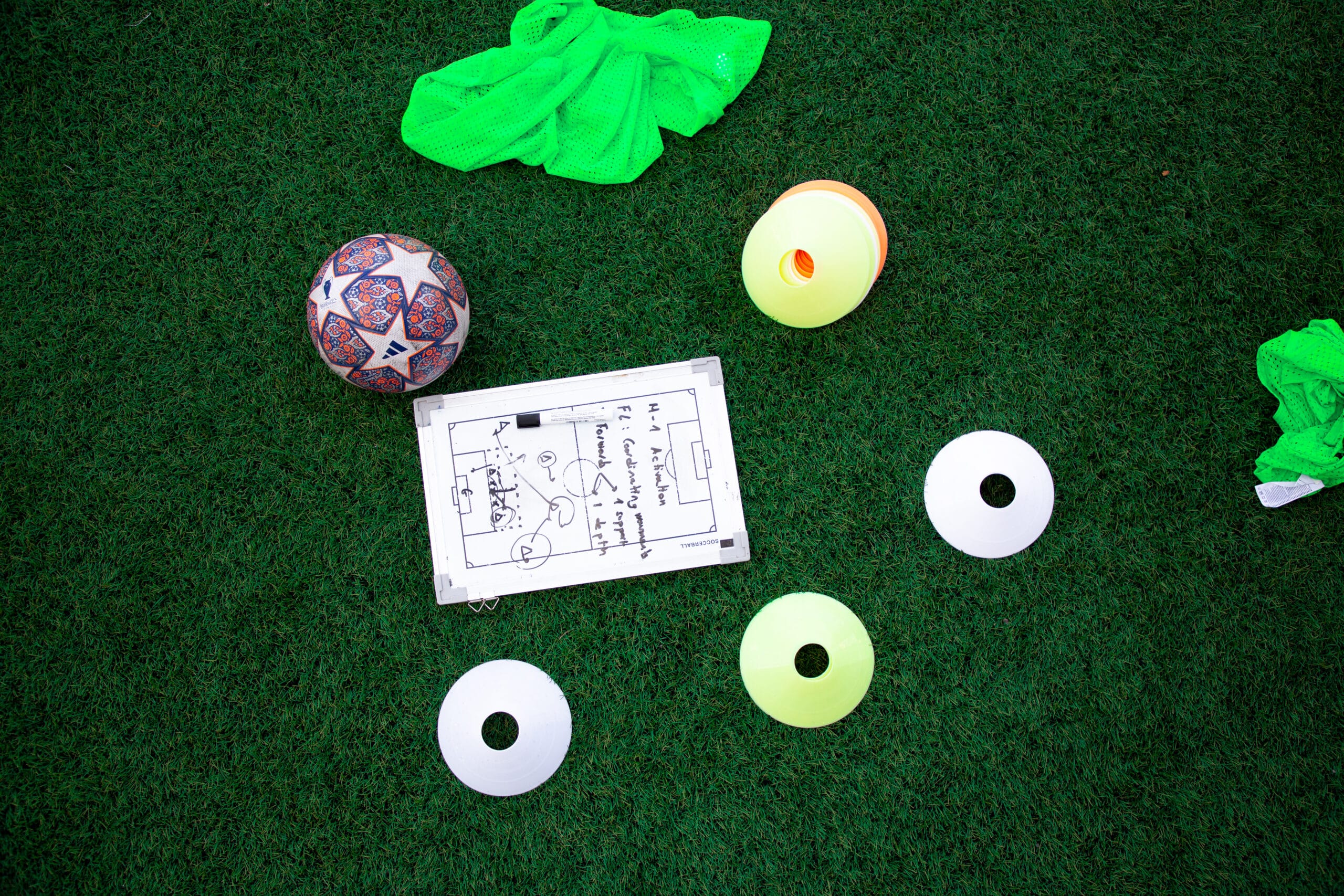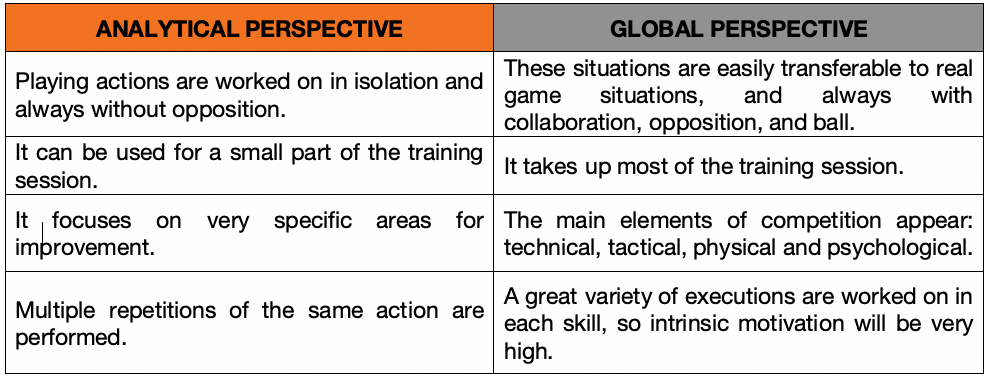When addressing the methodological basis of training, two fundamental perspectives emerge: the analytical and the global. In this week’s article, we will break down the characteristics of each approach, as well as their advantages and differences.
Analytical Perspective
The analytical perspective focuses on isolated actions of the game, separated from the context of the match, with the purpose of perfecting specific elements (Sans and Frattarola, 2006).
This approach can be carried out with or without opposition, in addition to not always having the ball depending on the content to be worked on.
Example 1: Two players practise passing at close range to improve the technique of striking with the inside of the foot.
Example 2: A circuit of cones in which only one player performs a Basic Motor Skill (BMS), such as changes of direction, jumps, turns and movement patterns etc.
It is also important to emphasise that in order to introduce training content in a global context, motor proficiency in that particular skill is required. This minimum skill background will be ensured through analytical work, which can be beneficial prior to the global approach (MBP, 2014), especially with regard to both basic and specific motor skills.
The ability to focus on very specific aspects, such as ball striking in passing or shooting, will ensure essential technical proficiency for later development in global settings. Furthermore, by increasing the motor skill’s efficiency, the player will be able to focus on the aspects of perception and decision making, which are essential for the correct implementation of motor skills in the real game.
Global Perspective
As for the global perspective, it is about working on game situations that include many structural elements of the competition, being more contextualised (Ardá, 2003; Wein, 2004; Sans and Frattarola, 2006; Casáis, Domínguez and Lago, 2009).
This approach is always carried out with collaboration, opposition and ball. An example would be a 2vs2 game, where in order to practice driving with the ball, a goal must be scored by arriving into a given space with the ball under control.
It is essential to bear in mind that in the global perspective the main elements present in the competition appear: technical, tactical, physical and psychological. These elements always manifest themselves, although in different proportions depending on the moment, in a similar way to the competition (Fradua, 2001; Wein, 2004; Sans and Frattarola, 2006).
The situations proposed, being similar to those of a real match, allow the improvements obtained in training to be quickly reflected in the competition, being easily transferable to real game situations by the players.
Furthermore, the format of the proposed didactic strategies guarantees a higher level of intrinsic motivation in global situations, as playing matches is what young players enjoy the most, and the global perspective is more similar to this experience.
Therefore, it will not be as necessary to motivate the player extrinsically, as the game will fulfil this function, allowing more time to be spent on providing information about the training content.
Finally, it is important to highlight that situations in football are very open, as there are different situations that can be solved in different ways depending on multiple factors (spatial conditions, time availability, position of teammates and opponents, etc.). In global tasks, unlike analytical tasks, a wide variety of executions of each skill are worked on, as they are trained in open situations (Sans and Frattarola, 2006).
Conclusion:
Table 1. Main differences between the analytical perspective and the global perspective. Source: MBP








